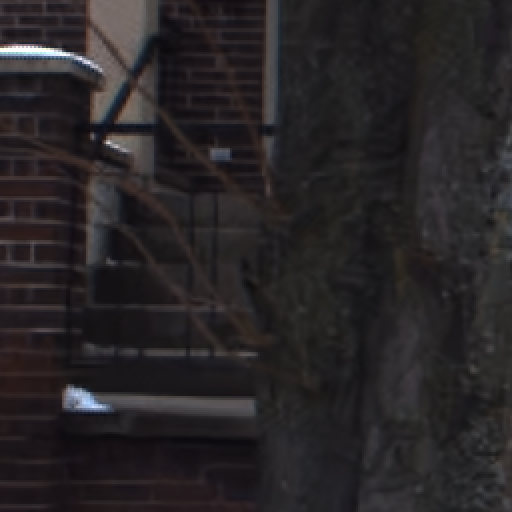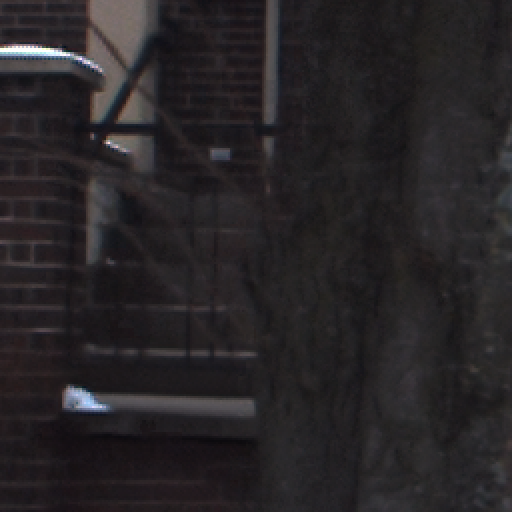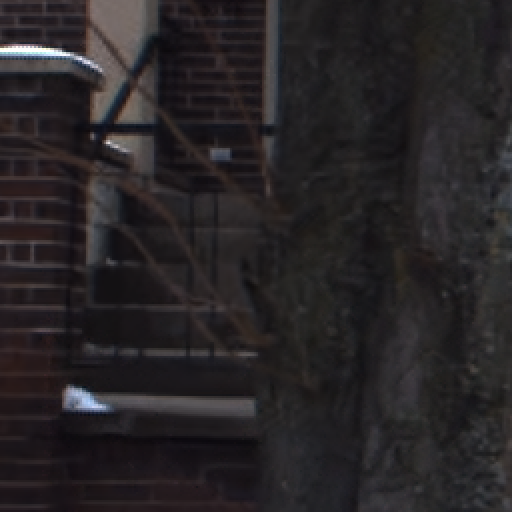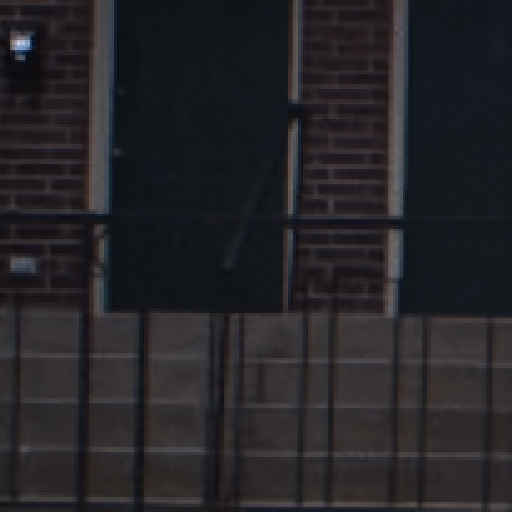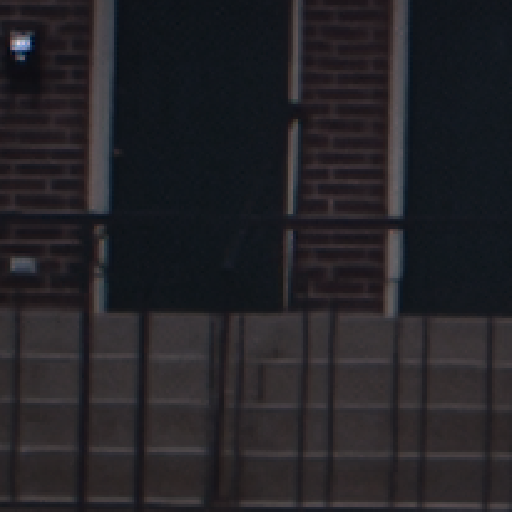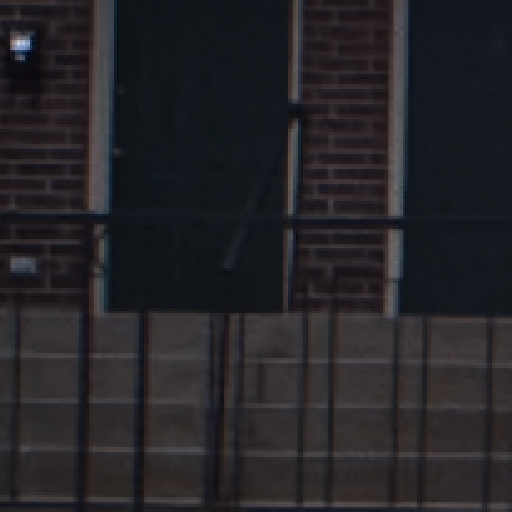Real Results: Driving Scene
This sequence was captured with two cameras, Canon EOS 7D and Point Grey Grasshopper, pointed out the passenger window of a moving vehicle. To illustrate the benifit of denoising videos with motion-based exposure, we operated the 7D at a constant exposure time 1/30 second, and implemented a motion-based exposure control on the Grasshopper. This scene is challenging for video denoising due to large inter-frame motion, thin structures (tree branches), and a large range of parallax between many frames.
Frame 59
| Constant 1/30 second exposure (Canon EOS 7D) |
Motion-based exposure (Point Grey Grasshopper) |
Our denoising result |
|---|---|---|
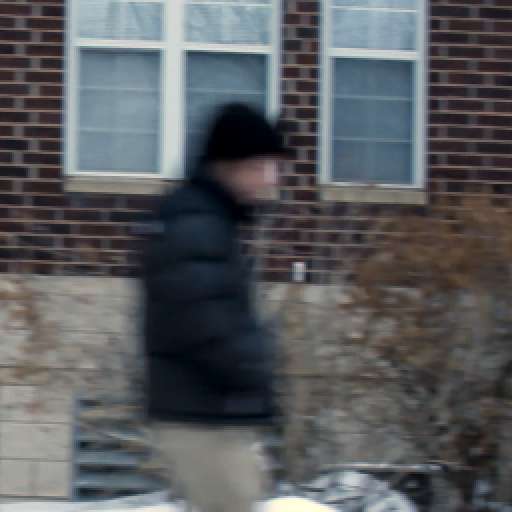 |
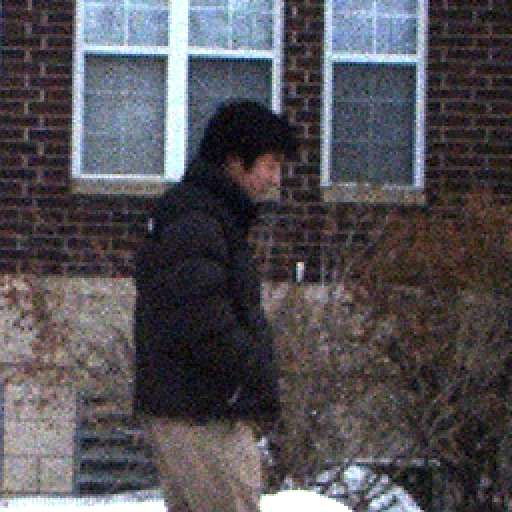 |
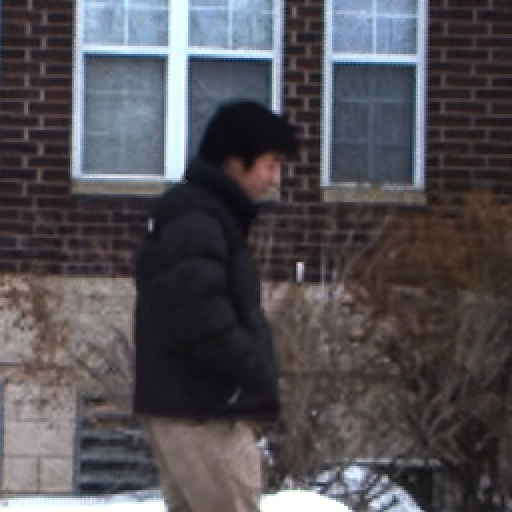 |
A pedestrian is blurred significantly in an image captured using a constant exposure. Using motion-based exposure control and our denoising algorithm results in a higher quality image.
Frame 71
| Noisy input | CBM3D | Liu and Freeman | Our algorithm |
|---|---|---|---|
|
|
|
|
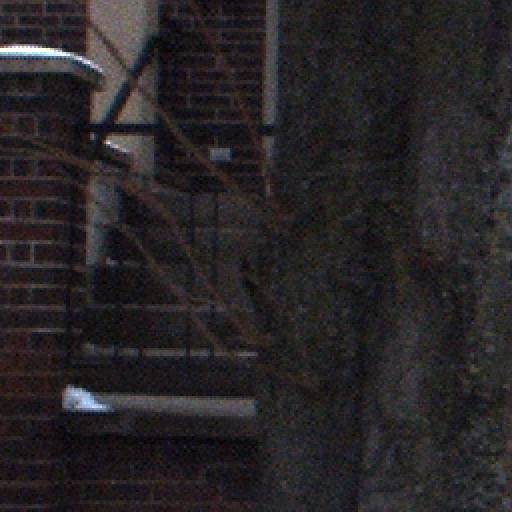
Constant exposure time |
|||
The optical flow in this frame is unreliable around the tree due to parallax. Our result is comparable to the CBM3D result, which is unaffected by the parallax. Liu and Freeman's result is blurry since it relies on the optical flow.
Frame 94
| Noisy input | CBM3D | Liu and Freeman | Our algorithm |
|---|---|---|---|
|
|
|
|
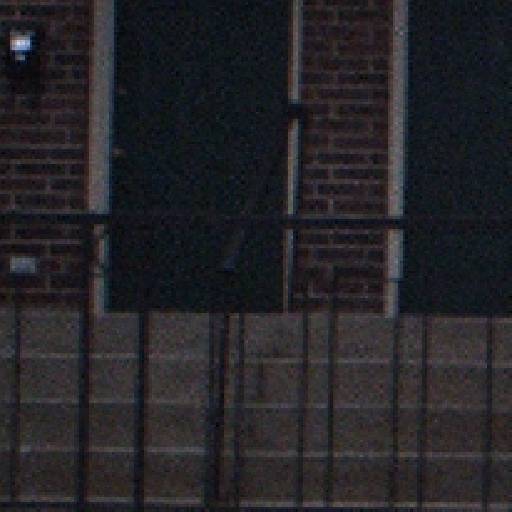
Constant exposure time |
|||
Again, our algorithm is comparable to CBM3D, which performs well on repetitive structural patterns (the brick and railing). Liu and Freeman's method over-smooths the brick and also fades the railing which is affected by parallax.
